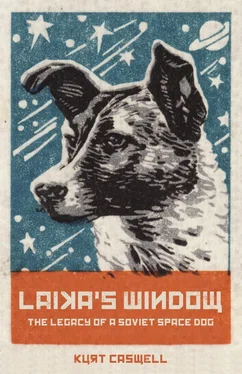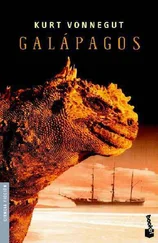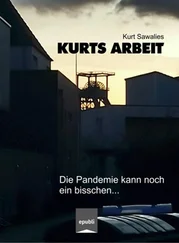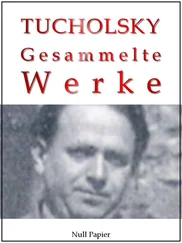Laika’s capsule had been designed with a breathing opening on the outer shell sealed by a screw cap. Removing that cap was the easiest way to equalize the pressure. Yazdovsky and Alexander Dmitrievich explained the situation to the engineers on site, one of whom was Ivanovsky. It may have required a bit of coaxing and reassurance to convince them that Korolev backed this strange request, that there was time before launch to make this happen. That done, everyone stood by as one of the engineers unscrewed the cap. The pressure now normalized, the cap could go back on, but Yazdovsky and Alexander Dmitrievich had something else in mind.
“They literally attacked me, especially Alexander Dmitrievich,” Ivanovsky writes in The First Steps . “Please, I beg you,” insisted Alexander Dmitrievich, “Let’s water Laika!”
Ivanovsky calls this moment in Laika’s story “a trickery,” and Burgess and Dubbs describe it as “a subterfuge.” Whatever the sneakiness of the plan, after three days inside the capsule Laika needed water. She had eaten all of her space dog food, and while it would have helped with her thirst, it was not enough. She was probably already suffering from dehydration, her body’s systems slowing down. Without water, Laika was not going to live much longer, and she had not even left the ground. “Frankly speaking,” Ivanovsky writes, “we all were willing to comfort Laika’s life in space a little bit.”
In some re-creations of this moment in drawings, books, and animated shorts, the team opens Laika’s window to give her water, but the window was not fixed on a hinge that could be opened. It was sealed tight, all the way around. The capsule too was sealed. It did not include a door but was rather a cylinder with an end-cap, and the end-cap contained the window. If either the window or the end-cap had to be removed to equalize the air pressure, it would have been impossible to complete the job and still launch on time. Korolev would not have given permission for such a delay. The image of Laika with her window open wide, the medical staff and engineers comforting her, giving her water to drink from a bowl, patting her on the head, is a comfort to us, but it is a fiction. The reality was far more clinical.
Alexander Dmitrievich pushed a rubber tube onto the end of a large syringe and filled the syringe with water. In her condition, Laika was probably listless and groggy, perhaps mostly lying with her head down between her front paws stretched out before her, her ears tipped over on the ends. All the activity outside her capsule might have brought her to attention. All the talk and bustle. What was going on out there? I imagine that she could see people moving through the window, and some of them were people she knew, who had fed her, walked her, trained her. And there was Yazdovsky, the man who took her home. “When Laika saw a familiar face through the window,” writes Ivanovsky, “she showed all the signs of canine joy.” What does canine joy look like? Perhaps Laika stood up inside her capsule, the restraining chains restricting her movement. We do not really know. Perhaps she wagged her tail, panted hard at the window, steaming it with her breath, her body wiggling now with the wagging of her tail, her head going back and forth too, her ears moving up and down in her wiggling. And perhaps she barked.
Alexander Dmitrievich dropped the tube through the breathing opening and filled the empty food tray with water. Laika drank. She drank it all and would have taken more, but the opening had to be resealed. Sputnik II was soon to launch. These were the last moments of Laika’s life in human company. The men looked in at her, and she looked out at them. Then, Ivanovsky writes, she “gave a grateful nod led by her wet nose.”
SIX
¤
First Around the Earth
It made her think of Laika, the dog. The man-made satellite streaking soundlessly across the blackness of outer space. The dark, lustrous eyes of the dog gazing out the tiny window. In the infinite loneliness of space, what could the dog possibly be looking at?
HARUKI MURAKAMI
Sputnik Sweetheart , 2001
On the morning of November 3, 1957, Ivanovsky looked out from the observation site at Baikonur to see the rocket that would carry Laika into space sitting on the launchpad, a “bright, white rocket, like a candle, standing out against the cloudless and blue November sky,” he writes. Everyone was there watching. Korolev was there, dignitaries and government officials from Moscow, scientists and engineers. Some held binoculars to bring the rocket in closer. The loudspeakers crackled, and a voice gave the ten-minute alert. Then one minute. And then a series of instructions, followed by a final command: “Launch!”
The engines fired, a great plume of smoke and dust and fire spreading out like a flower against the ground. With the engines ablaze, the rocket seemed to sit on the pad a moment, a moment more, and then it rose smoothly into a space above the pad as if hovering there, not sure if it should stay or go, and then it went, accelerating as it rose, faster and faster, that bright burning flare of the engines running beneath it, bright as the sun. The rocket made a long bright line high above and to the east, Ivanovsky reports, and as the first-stage booster separated “beautiful ripples appeared in the sky,” ripples that could be seen as far downrange as Alma-Ata, just north of the great Issyk-Kul Lake in present-day Kyrgyzstan. Those ripples dissipated, and the rocket kept going in its speed, so high and away that it was beyond where anyone could see, beyond the Karman line, beyond the Earth and on into orbit, into that slip of space between where everyone is and where no one had yet to go.
“Laika flew off,” Ivanovsky writes. “We rushed to the cars and headed to the telemetry stations where radio signals of Laika’s heartbeat would be received, as if by an invisible wire. Was she alive? Did she survive the take-off, the g-forces, the vibration?”
“It was a historic event,” said Alexander Seryapin in Space Dogs . “Standing seven kilometers from the launch pad, you can feel the Earth vibrating. And then the sound of the engines. You know it gives you the shudders.” As he stood watching the rocket, tears came into Seryapin’s eyes imagining Laika in her capsule. “I thought it was just me who felt that way,” he said. “For the first time, I saw men really weep when they were told that Laika had gone into orbit.”
Inside the telemetry station, Alexander Dmitrievich studied the information coming in from Sputnik II . Then he raced to the door and threw it open, nearly tumbling out. Ivanovsky was there and some others were approaching, obviously in want of the news. He “threw the thumbs-up to us,” Ivanovsky writes, “all right! It was a victory. Laika was alive! She was whizzing above the earth, unaware of what was happening to her and where she actually was.” The telemetry signals from Laika, the fact that her heart was beating, her lungs were drawing breath, she was moving about a little, meant that the team had proven “that it was possible to live in space, in the mysterious and unexplored world!” Ivanovsky writes.
More information came in. During launch, Laika’s heart rate increased to more than 260 beats per minute, about three times normal for a dog. Her respiration increased too, to about five times normal. When the satellite entered orbit and microgravity, Laika’s heart rate began to slow, along with her breathing, and then stabilized. She stabilized, sitting in her capsule, calmer now, the capsule familiar to her but for the strange sensation of microgravity. She was not floating about the cabin, as the restraining chains and the small space she occupied prevented that, but she would have sensed the immense g-force pushing down on her during the flight, and then suddenly nothing. According to the medical team on the ground, Laika had endured the launch well, and now she was up there, shooting around the planet at 17,500 miles per hour in an elliptical orbit with a 140-mile perigee and a 1,039-mile apogee. At this speed and orbit, Laika made one revolution around the Earth in about 103 minutes. She was now the fastest dog that ever lived.
Читать дальше












